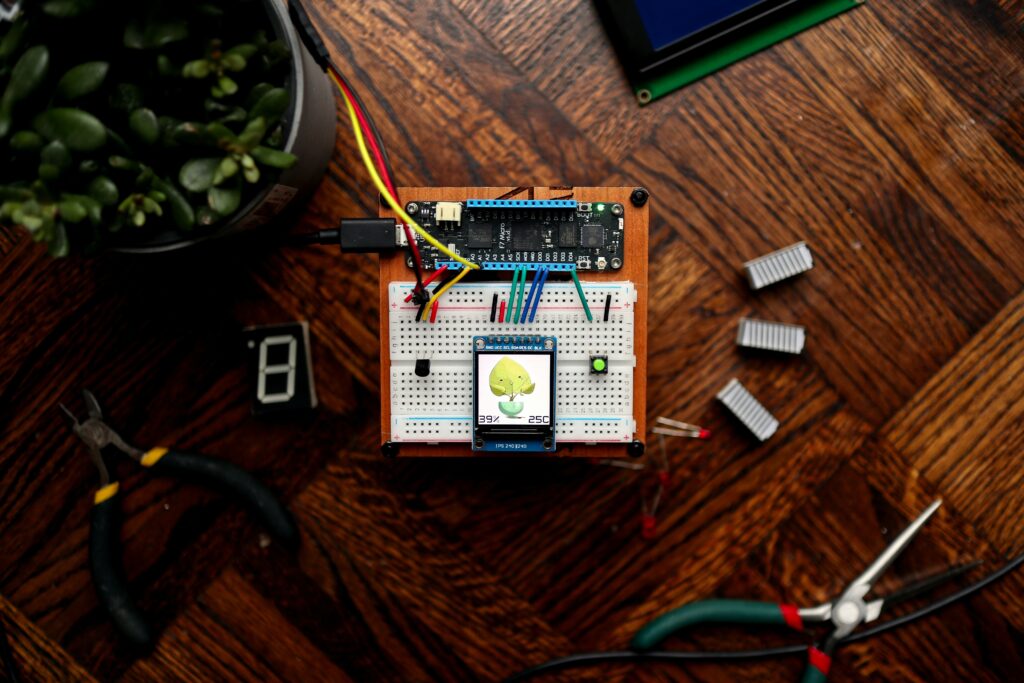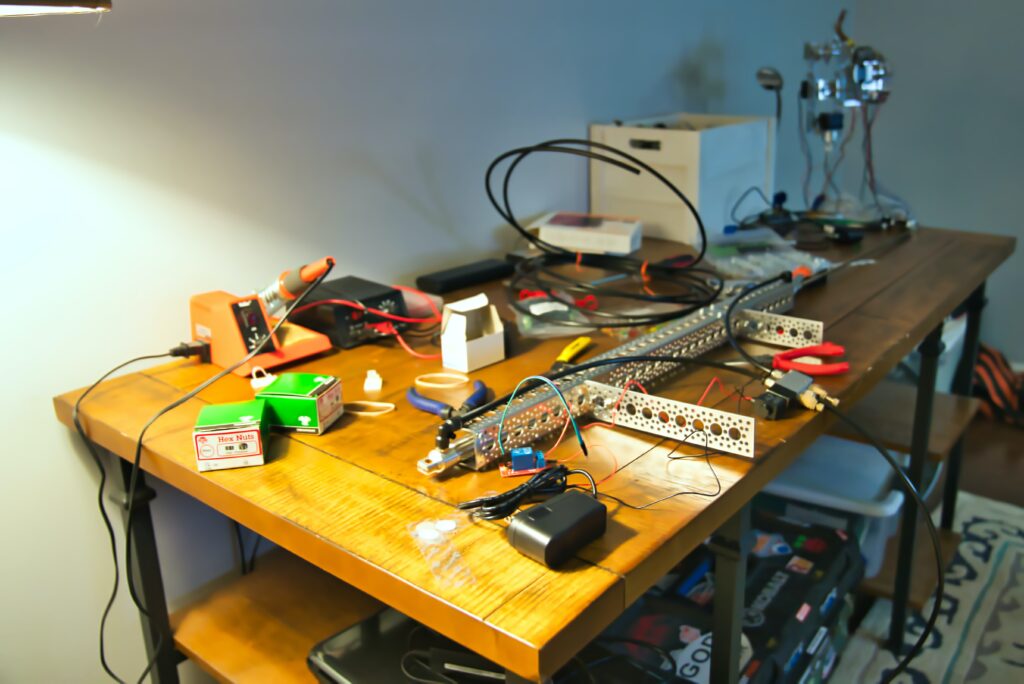The Internet of Things (IoT) is transforming the way we live and work. IoT devices are connected to the internet and can collect, share, and analyze data. This data can be used to automate tasks, improve efficiency, and make our lives easier and more efficient.
How IoT works

IoT devices work by collecting data from their surroundings and sending it to the cloud or to other IoT devices. This data can then be analyzed to provide insights or to automate tasks. For example, a smart thermostat can collect data about the temperature of your home and send it to the cloud. The cloud can then analyze this data and send instructions to the thermostat to adjust the temperature accordingly.
Benefits of IoT

The Internet of Things (IoT) offers a multitude of benefits across various industries and everyday life. First and foremost, it enhances efficiency and productivity by connecting and automating devices and processes. This leads to cost savings, reduced human error, and optimized resource utilization.
IoT also improves safety and security through real-time monitoring and data analysis. For instance, in smart cities, it can help manage traffic flow and emergency response systems. In healthcare, it enables remote patient monitoring, enhancing healthcare outcomes.
In the consumer realm, IoT enhances convenience with smart homes, where devices like thermostats and lights can be controlled remotely. It also enables personalized experiences, as wearable devices track health metrics and preferences.
The security and privacy implications of IoT:

IoT devices can be vulnerable to cyberattacks, and they can also collect a lot of data about us. You could write about the security and privacy risks associated with IoT, and how to mitigate these risks, also IoT is a complex technology, and there are a number of challenges associated with implementing it. You could write about the technical, economic, and logistical challenges of IoT deployment.
How IoT is changing different industries:
IoT is having a major impact on a wide range of industries, including manufacturing, healthcare, transportation, and agriculture. You could write about how IoT is being used in these industries to improve efficiency, productivity, and safety.
Conclusion
IoT is a rapidly growing technology with the potential to revolutionize many aspects of our lives. While there are some challenges associated with IoT, such as security and privacy, the benefits of IoT far outweigh the risks. As IoT technology continues to develop, we can expect to see even more innovative and groundbreaking applications in the future.
FAQs
FAQ 1: What are the different types of IoT devices?
IoT devices can be classified into a number of different types, including:
- Smart home devices: Smart home devices are designed to control and automate our homes, such as smart thermostats, lights, and appliances.
- Wearable devices: Wearable devices are worn on our bodies to track our fitness, health, and location, such as smartwatches and fitness trackers.
- Industrial IoT (IIoT) devices: IIoT devices are used in industries such as manufacturing and agriculture to improve efficiency, productivity, and safety.
- Smart city devices: Smart city devices are used in cities to improve traffic flow, energy efficiency, and waste management.
FAQ 2: What are the benefits of using IoT devices?
IoT devices offer a number of benefits, including:
- Convenience: IoT devices can make our lives more convenient by automating tasks and allowing us to control our devices remotely.
- Efficiency: IoT devices can help us to be more efficient in our use of energy and resources.
- Safety: IoT devices can help to improve our safety by monitoring our surroundings and alerting us to potential hazards.
- Sustainability: IoT devices can help us to live more sustainably by reducing our environmental impact.
FAQ 3: What are the challenges of using IoT devices?
There are also some challenges associated with using IoT devices, including:
- Security: IoT devices can be vulnerable to cyberattacks, so it is important to take steps to protect them, such as using strong passwords and keeping software up to date.
- Privacy: IoT devices can collect a lot of data about us, so it is important to be aware of how this data is being used and to take steps to protect our privacy.
- Complexity: IoT devices can be complex to set up and use, especially for people who are not tech-savvy.
FAQ 4: What is the future of IoT?
The future of IoT is very bright. As IoT devices become more affordable and easier to use, they are expected to become increasingly common in our homes, businesses, and cities. IoT is also expected to play a major role in the development of new technologies, such as self-driving cars and smart cities.
FAQ 5: How can I get started with IoT?
There are a number of ways to get started with IoT. One way is to start with simple IoT devices, such as smart lights or a smart thermostat. These devices can be relatively easy to set up and use, and they can provide a good way to experience the benefits of IoT.
Another way to get started with IoT is to use a smart home hub. A smart home hub is a device that can connect and control a variety of different IoT devices. This can make it easier to set up and manage your IoT devices.

